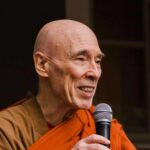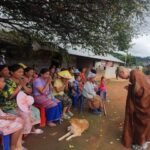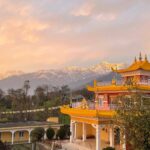 George and Lillian Willoughby served as a model couple. They lived together for more than 60 years with love and understanding. They led a simple lifestyle that challenged mainstream society nonviolently. In this respect they are worthy of emulation and respect.
George and Lillian Willoughby served as a model couple. They lived together for more than 60 years with love and understanding. They led a simple lifestyle that challenged mainstream society nonviolently. In this respect they are worthy of emulation and respect.
The love and understanding of this couple extended to friends and acquaintances within and beyond the confines of the American border, their homeland, such as in South America, where George grew up, and in India, where both George and Lillian attempted (in many respects successfully) to follow the path of Mahatma Gandhi. The couple was close to many of Gandhi’s followers. Whenever they were in India both George and Lillian preferred the companionship of the local people more than Westerners. George in particular travelled extensively throughout India-by train (third class), bus, or foot. Once, George arrived at his destination by train but missed the pick-up rendezvous. It was already late and therefore he slept at the train station like the other Indian passengers.
George used to admire the Sarvodaya movement, which was founded by Ariyaratne. Ariyaratne has attempted to cultivate Gandhian principles such as rural development, self-reliance, and mutual interdependence in Sri Lanka. But George later sensed that Ariyaratne had not truly followed the path of nonviolence and truthfulness. As a kalyanamitta (virtuous companion) he therefore raised this concern with the latter. Ariyaratne had no stomach for George’s criticism. Inflamed, he even asked the Sri Lankan government to ban George from entering the country.
Since he couldn’t get into Sri Lanka, George came to the Thai kingdom instead. He helped us train young Buddhist monks and lay people in the practice of nonviolence. Members of other religious communities also benefited from his expertise. George enabled us to develop contacts with leading nonviolence practitioners worldwide. Through him we also participated in the Peace Brigade International and the War Resistant International. Partly through these connections, I myself became internationally renowned. We also collaborated with the American Friends Service Committee (AFSC).
George was involved with all of the abovementioned organizations. He also taught at Pendle Hill, which is an AFSC institution and is located in Pennsylvania. Subsequently, he felt that teaching was straight-jacketing his creativity, inhibiting his ability to challenge unjust social structures. He left Pendle Hill and chose to be unemployed. Lillian closely supported her husband’s decision.
The couple set sail to the Pacific Ocean to protest against the testing of nuclear weapons. They were both caught. George later filed a suit against the US government and won.
During the Vietnam War George helped many American boys to escape the draft through the well-known “peace testimony.” As Quakers, George and Lillian were pacifists and peacemakers and asserted their right not to participate in and prepare for war. They believed that all humans are friends and are equal.
Supported by the Quaker movement, George and Lillian frequented Asia approximately every 5 years. They stayed over at friends’ places in a simple manner. They recorded their reflections on each trip and circulated these notes among their friends. Their reflections were often useful and their commentaries were sharp and witty, reflecting a supple understanding of local contexts. George and Lillian also presented views that were in direct opposition to those of the powers that be.
George and Lillian were my best American friends. They were also very close to my family. George was the eldest of my friends. Every time he came to Bangkok, he stayed at my house. If I happened to be in the US I often stayed with the Willoughbys or George would ask his daughter to drive to see me.
I am also well acquainted with their children. Each of their children is highly independent. Sometimes they would quarrel with their parents. But George got along well with his children. He tried to understand his children as well as others beyond his family. He told me to confront every problem mindfully and to try to understand a situation from the point of view of the opposite side.
Although George and Lillian were already getting old, they joined the Movement for a New Society and lived with the younger generation of social activists. Members of the Movement wanted the time to reflect and meditate and to create revolutionary change in society through nonviolence. They also wanted to express sexual freedom. To the young activists, George and Lillian must have appeared pretty conservative sexually since they were always faithful to one another. The Movement also published many provocative books and materials before it was terminated in the late 1980s.
Toward the end of their lives George and Lillian in conjunction with several others bought lands in the ?underdeveloped’ part of New Jersey and set up some sort of a cooperative. They intended to preserve this vast expanse of land from the so-called “land developers.”
When a university planned to award George with an honorary doctorate he replied that he would accept it only on the condition that Lillian received it too. He said that his ideas and views were inextricable from hers.
Lillian passed away on 15 January 2009. I wrote a short piece on her in my E
nglish bookRediscovering Spiritual Values: Alternative to Consumerism from a Siamese Buddhist Perspective and dedicated my most recent English book The Wisdom of Sustainability: Buddhist Economics for the 21st Century to her memory. George was greatly satisfied. With the absence of Lillian, it seemed that a part of George was missing as well. He had planned to visit India again in February this year but passed away peacefully on 5 January 2010. He was 95 years old.
I have lost another virtuous and beloved friend.
Sulak Sivaraksa
———————————–
Photo from www.quakerquaker.org
?
Credit: http://www.sulak-sivaraksa.org/en/index.php?option=com_content&task=view&id=287&Itemid=77










